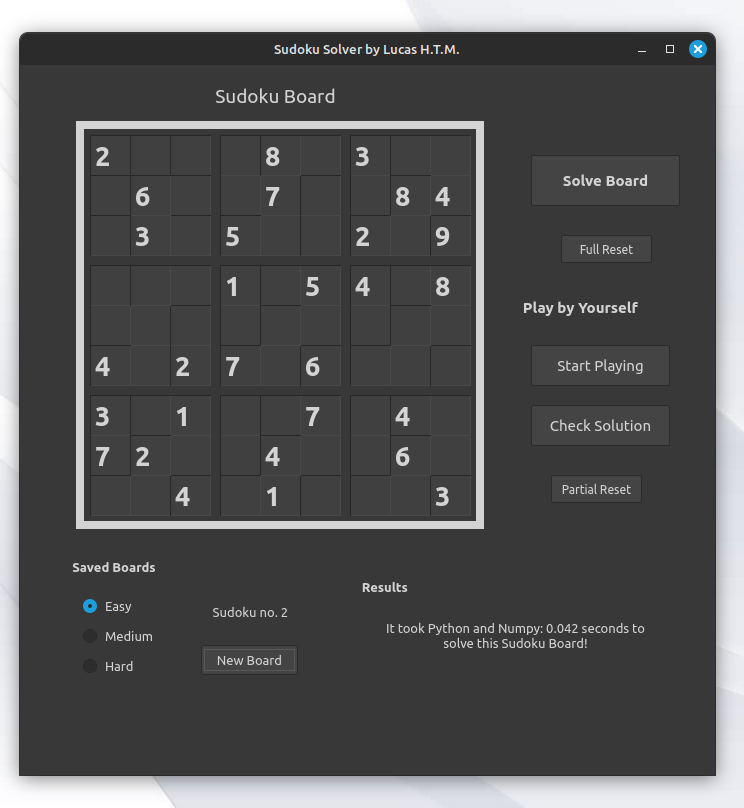Cesar Cipher and Sudoku
A Short Summary of Two Projects
These two projects were among the first I completed after I started learning how to program in 2023. I was drawn to the idea of creating user interfaces, even if they were simple, so I decided to implement both of these projects using PyQt5. Now, almost a year later, I’ve learned a lot since then, so here’s a brief summary of each project and some key takeaways.
Sudoku Solver
I wanted my program to do more than just solve any Sudoku board, so I added a few features:
- Found and saved “easy,” “medium,” and “hard” boards to .csv files. If the user wants to play around with the program and not have to manually input sudoku boards.
- Allowed the user to play by themselves and check their solution.
- Used NumPy for faster solving speeds.
The Program in Pictures

Most of the functionality of the buttons and use of the program is self-explanatory but I did include a message area, “results”, which responds to most of the button actions in case any clarification is necessary.

Here is a completed board, one of the hardest for the current implementation of the underlying algorithm.

The user can also input their own boards and check their solution or ask the program to solve it for them. Only numerical inputs are accepted within each number square.
Learning Points
- This was the first more meaningfully larger codebase I worked on, so I had to break down functionality into specific functions and learned the importance of commenting and documenting my work.
- The experience of managing a project with multiple features gave me insights into how to structure code effectively.
Caesar Cipher
At the time, I was just starting to study cryptography and wanted to explore how easily linear ciphers can be broken due to emerging patterns. This program analyzes letter frequency in a coded message and makes an educated guess on the message by determining which rotation (shift) fits best.
The Program in Pictures

After selecting a key (random or not), the “run”” button encodes the message based on the corresponding cypher shift.

The more interesting part of the program, the coded message is analyzed for letter frequency, most inputs larger than a few words are easily decoded! The program is still missing the functionality to make other languages work.
Learning Points
- Working on this project helped me understand the basics of frequency analysis and how to implement it in code.
- The project reinforced the importance of testing and refining algorithms to ensure accuracy.
- At the time I was also learning about test driven development, and so, I wrote simple tests for most functions while writing each function.
